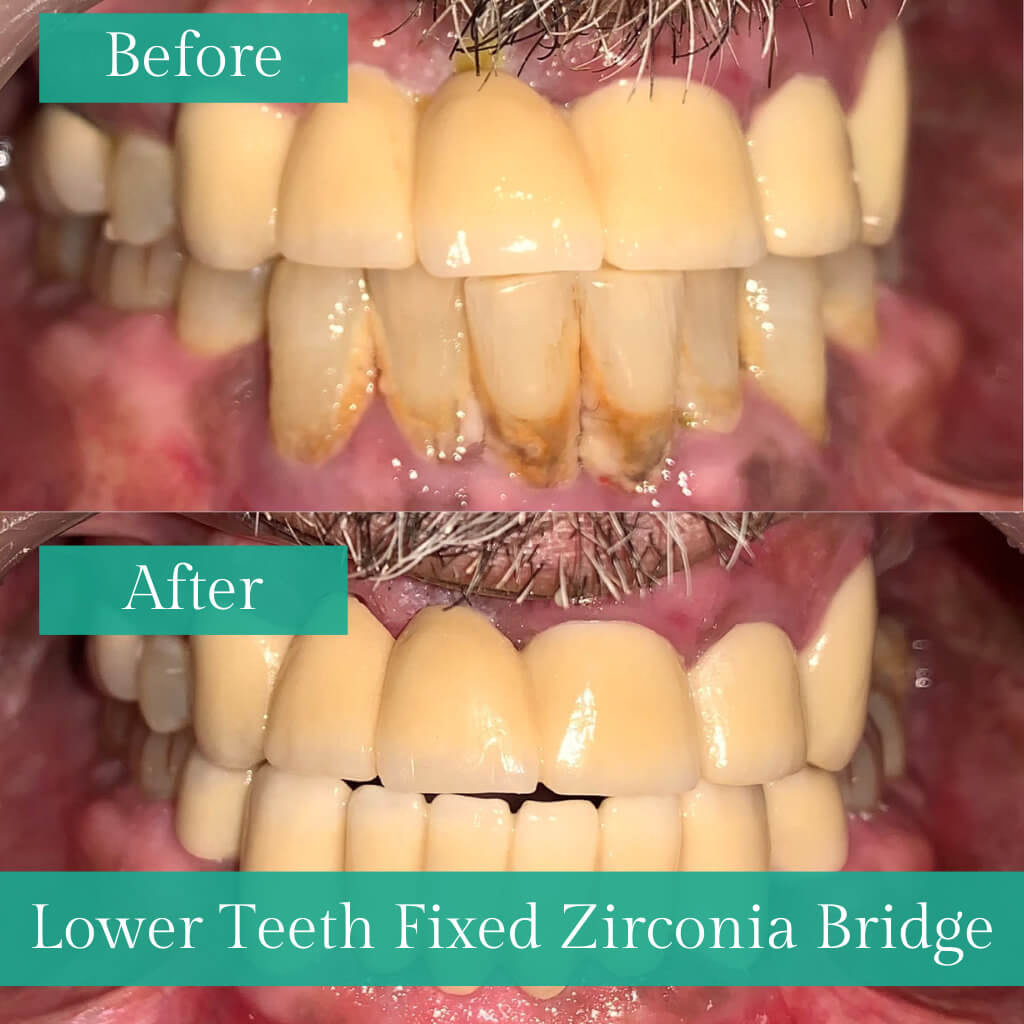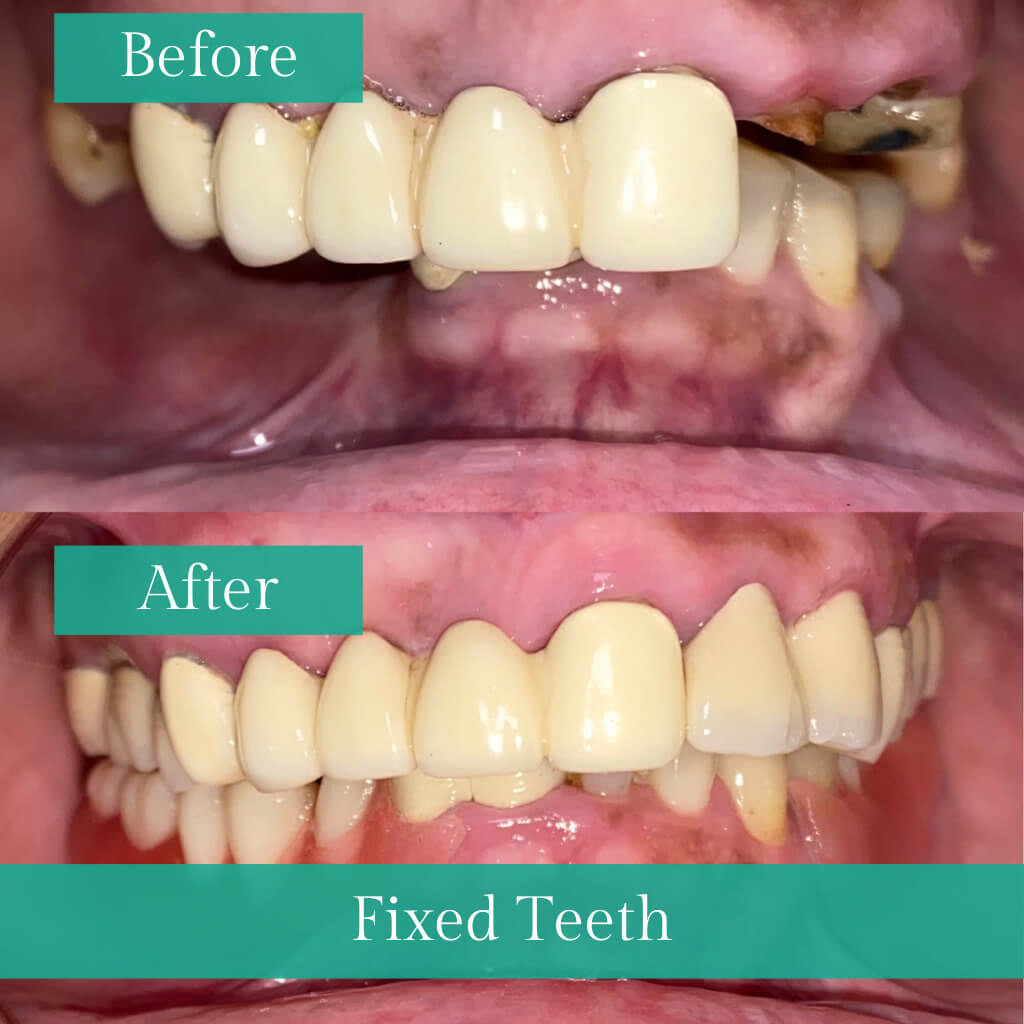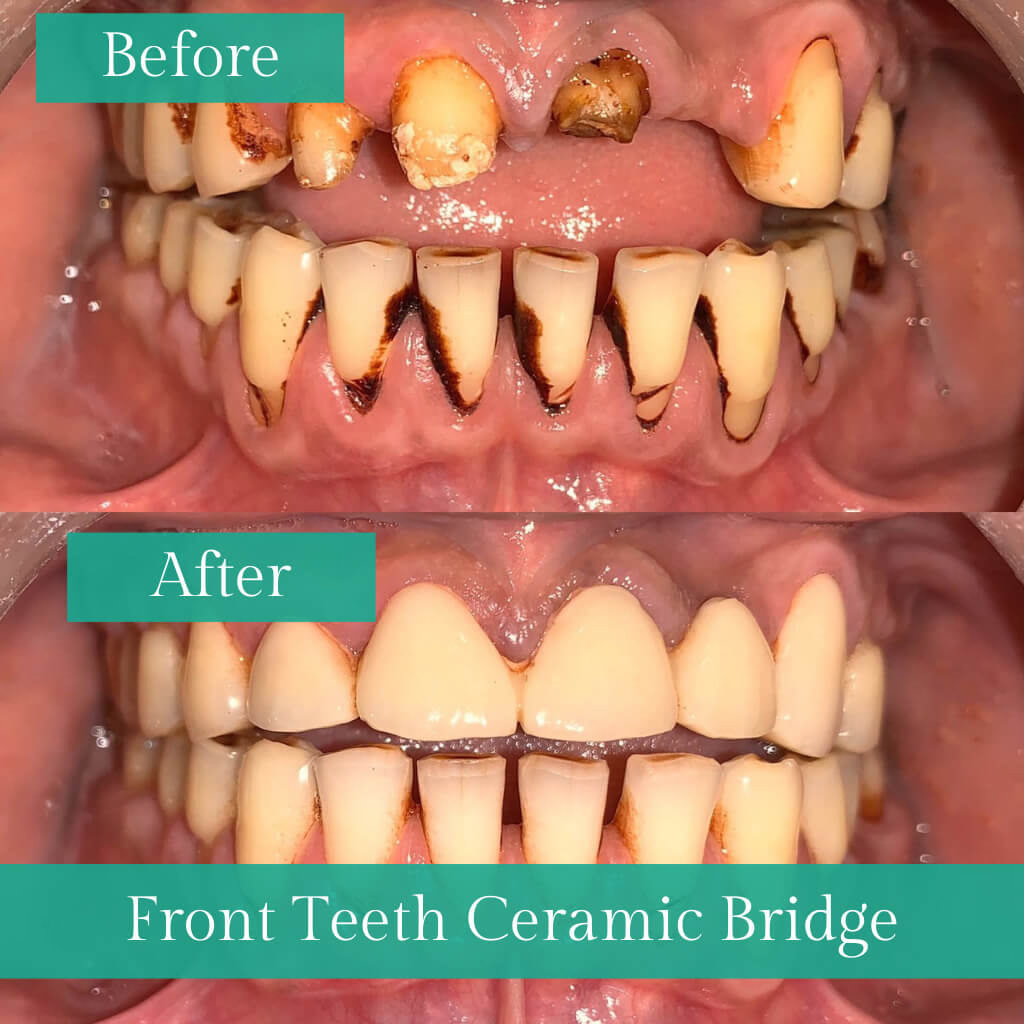What are Bridges?
Bridges are permanent dental solutions, replacing one or more missing teeth by securely linking to nearby natural teeth or dental implants. A bridge consists of artificial teeth, known as pontics, anchored to crowns placed on the abutment teeth or implants on either side of the gap. The primary function of a bridge is to restore proper chewing function, improve speech, and maintain the aesthetics of the smile. Bridges enhance oral functionality and prevent adjacent teeth from shifting, maintain facial structure, and distribute bite forces evenly.
What are Crowns?
Crowns, commonly called dental caps, are dental restorations that encase a damaged or weakened tooth, providing protection, strength, and restoration of its appearance and function. A crown is a personalised dental restoration crafted to cover the entirety of the visible part of the tooth, extending above the gum line. Crowns are essential when a tooth is severely decayed, fractured, discoloured, or has undergone root canal treatment. They provide structural support, prevent further damage, and ensure a natural-looking appearance. The process involves careful tooth preparation, impression taking, and the subsequent fabrication and placement of the Crown. Crowns are instrumental in preserving and prolonging the life of compromised teeth while maintaining overall oral health.
When are Bridges recommended?
- A person has one or more missing teeth, and there are healthy adjacent teeth that can serve as support for the bridge.
- The missing teeth affect chewing function, speech, or aesthetics, and the patient desires a fixed solution.
- The absence of the teeth could lead to the shifting of neighbouring teeth, causing bite problems or cosmetic issues.
- Implants are not an option, or the patient prefers a non-surgical solution.
When are Crowns recommended?
- A tooth is severely decayed or has a large filling, making it susceptible to further damage.
- A tooth has undergone root canal treatment, which weakens the tooth structure, necessitating a crown for protection.
- A tooth is cracked, fractured, or weakened due to injury, grinding, or extensive wear.
- A tooth is discoloured or misshapen, and the patient desires a more natural appearance.
- A tooth is part of a dental bridge or implant, where the Crown acts as the connector or restoration for the prosthetic tooth.
Aftercare tips
- Maintain regular brushing and flossing to keep gums and natural teeth healthy.
- Use a soft-bristled toothbrush and gentle flossing around the bridge or crown area.
- Refrain from consuming hard or sticky foods that could harm the bridge or Crown.
- Schedule regular dental check-ups for cleanings and assessments.
- Consider using a nightguard if you grind or clench your teeth at night.
- Monitor temporary sensitivity after crown or bridge placement.
- Reduce or quit smoking to improve the longevity of dental restorations.
- Ensure you consistently wear a mouthguard when participating in activities or contact sports that pose a potential risk of oral injury.
- Steer clear of using your teeth as tools to open packages or bottles.
Types of crowns
Crowns and bridges are manufactured in various materials. Each material comes with a distinctive set of advantages and disadvantages. For example- while metal crowns are strong, they lack esthetics. Ceramic or porcelain fused to metal has better esthetics but is prone to chipping in case of incorrect tensile forces. Zirconia crowns designed with CAD CAM have superior esthetics and are MRI-compatible due to their non-ferromagnetic nature. Depending on your case, we at Hope Dental and Esthetic Clinic provide you with options for crowns and explain the advantages and disadvantages of each to help you in making an informed decision.







